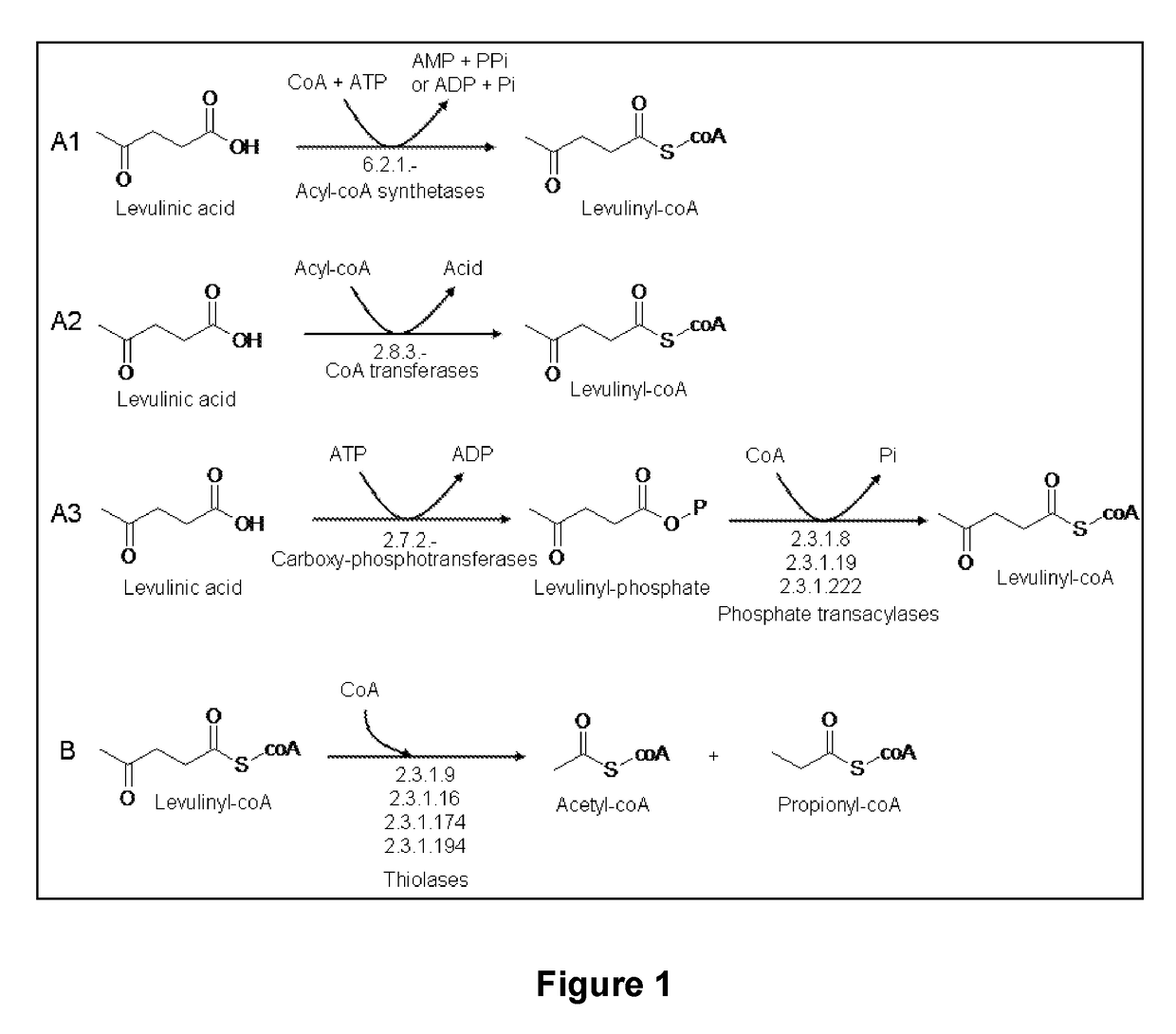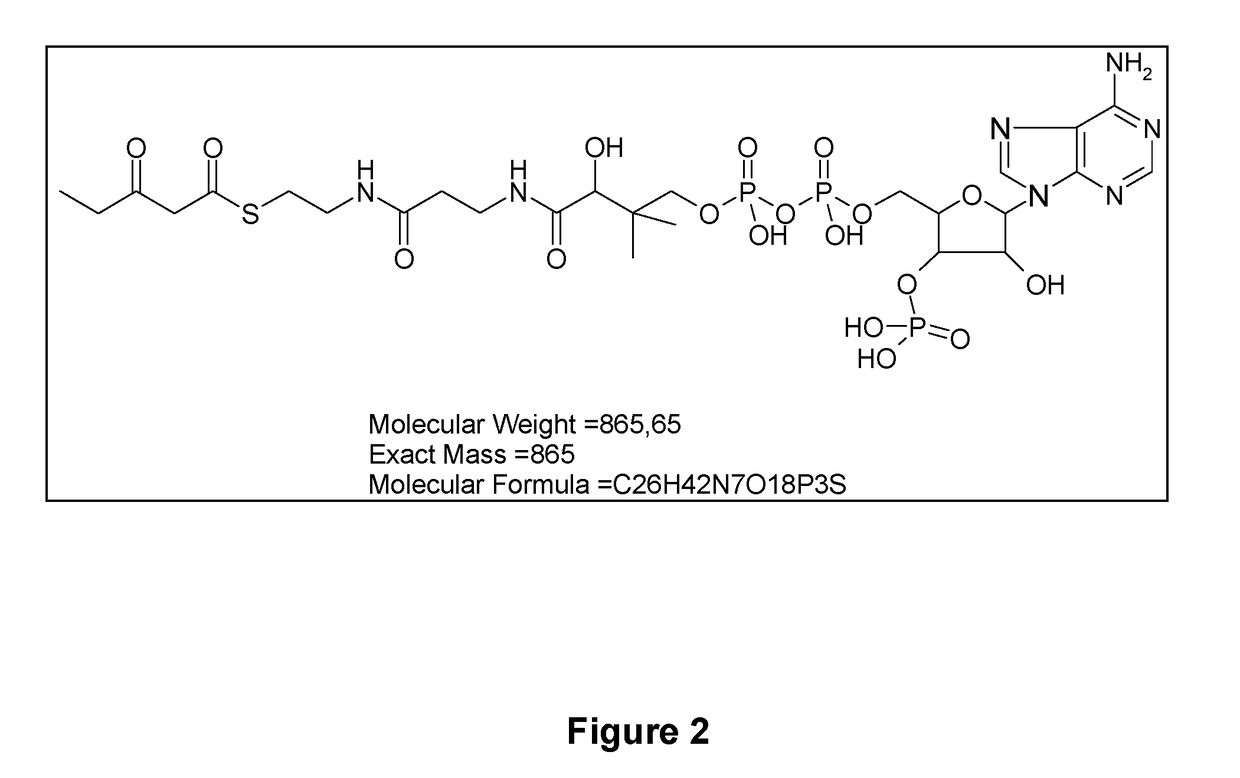Microorganism modified for the assimilation of levulinic acid
a technology of levulinic acid and microorganisms, which is applied in the direction of enzymology, ligases, transferases, etc., can solve the problems of labor-intensive approach, limited use of lignocellulosic substrates, and decrease in the productivity and yield of compounds of interes
- Summary
- Abstract
- Description
- Claims
- Application Information
AI Technical Summary
Benefits of technology
Problems solved by technology
Method used
Image
Examples
example 3
Validation of the Candidates Identified by Proteomics
[0158]To validate the activity of the candidates identified in Example 2 above with regard to reactions A1, A2 and B, their corresponding genes were cloned into the expression plasmid pPAL7 (Biorad®). In the case of QOKBZ9_CUPNH and Q0KC00_CUPNH, the corresponding genes were cloned in operon into the pPAL7. The resulting plasmids were transformed into E. coli BL21(DE3) strain.
TABLE 7Proteomics candidates testedSEQSEQ IDProtein namesID NO:Gene namesNO:Q0KA99_CUPNH1H16_A19712Q0KBZ9_CUPNH3H16_A13324Q0KC00_CUPNH5H16_A13316Q0KBG1_CUPNH7H16_A15288
[0159]The resulting strains were cultivated as described in patent application WO 2010 / 076324, incorporated herein by reference. Cells were collected by centrifugation and resuspended in potassium phosphate buffer 100 mM pH 7.6. Proteins were extracted by sonication and crude extracts were clarified by centrifugation. Recombinant protein purification was carried out using Biorad® PROfinity EXac...
PUM
 Login to View More
Login to View More Abstract
Description
Claims
Application Information
 Login to View More
Login to View More - R&D
- Intellectual Property
- Life Sciences
- Materials
- Tech Scout
- Unparalleled Data Quality
- Higher Quality Content
- 60% Fewer Hallucinations
Browse by: Latest US Patents, China's latest patents, Technical Efficacy Thesaurus, Application Domain, Technology Topic, Popular Technical Reports.
© 2025 PatSnap. All rights reserved.Legal|Privacy policy|Modern Slavery Act Transparency Statement|Sitemap|About US| Contact US: help@patsnap.com



